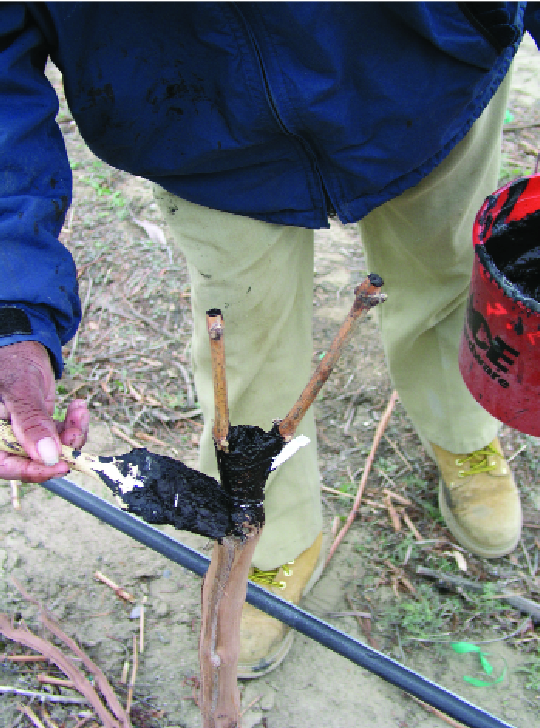
Black asphalt emulsion paint is used on a side graft of grapes to draw heat to the graft union and speed up the healing process.
Grafting over to a new variety, commonplace in the tree fruit industry, is a rare practice in Washington State vineyards. But grafting work done recently in several vineyards may prove the technique useful to Washington vineyardists. Both Greg Jones of Jones Vineyard in Mattawa and Jerry DeCoto, director of vineyard operations for Ste. Michelle Wine Estates, know they are venturing into risky territory by grafting vines in Washington.
“Grafting hasn’t been tried in Washington,” said DeCoto, adding that they had their first try grafting five acres last year. “It wasn’t a real great success because all the conditions for a good take weren’t right.” They knew before starting that the vines in the trial showed some winter injury and discoloration in the cambium from very low temperatures in October.
But they forged ahead, wanting to learn about vine conditions needed for grafting. DeCoto said that the grafts from last year went through the 2004-2005 winter just fine. For grafts and scion wood preparation to be successful, he noted that a mild winter is needed.
The vines and canes need to be hardened off in the fall and prepared for winter temperatures. Vineyards located in marginal areas that struggle to reach maturity and are routinely damaged from winter injury are not good candidates for grafting. Earlier this spring, they grafted another 22 acres, putting White Riesling bud wood on Cabernet Sauvignon vines.
Benefits
Jones said that while wine grape grafts are considered risky in Washington State by growers who are scared they will lose the graft from winter injury, he believes the benefits outweigh the risks. Jones hired commercial grafter Ken Coates from Wenatchee to put Riesling scion wood on 17 acres of self-rooted Cabernet Sauvignon in his Mattawa vineyard in March.
In recent years, premium Riesling wines have made a comeback in popularity. After years of growers replacing the workhorse variety with others bringing higher returns, winemakers today can’t find enough Riesling grapes. “Grafting is cheaper than a replant,” Jones explained, adding that he doesn’t have to rip out vines and buy new plant material.
Jones supplied the Riesling scion wood from another of his vineyards. But he admits that replanting is probably safer than grafting over to a different variety. “I wouldn’t do it unless I had to. But without a contract for Cabernet, I figure that it’s nothing lost.”
Jones hopes to harvest a three-ton crop from the grafted vines next year. DeCoto adds that though he hasn’t put a pencil to grafting costs to compare it to replanting, “if you get a successful graft, it should be economical.” Vine removal in older vineyards can be time consuming, especially if the cordons and trunks have wrapped and imbedded themselves into the stakes and trellis wires.
It is also difficult to remove all of the old roots, which means that suckers can be a problem. Another plus for grafting is the quick response to market demands. “Down the road, if the market for Riesling dies out, you’ve got your own-rooted vine to go back to,” DeCoto said.
“You can push up suckers and retrain the vine. But in California, most vineyards are on rootstock, so growers there don’t have that option.” DeCoto is more optimistic about the grafting take this time around and thinks that they should be able to harvest two to three tons in the second year of the graft.
“It should be a pretty quick pay back,” he said. DeCoto cautioned growers to use clean, certified wood for the scion wood, reminding them that if a disease like crown gall or grapevine leafroll virus is in the bud wood, it will be transmitted back to the vine.
“I know that grafting works in California,” he said.“We’ve gotten as high as 95 percent take in some of our vineyards down there. But this is not California. But it’s definitely worth looking at. We’re hoping that it works because it gives more options to the grower.”

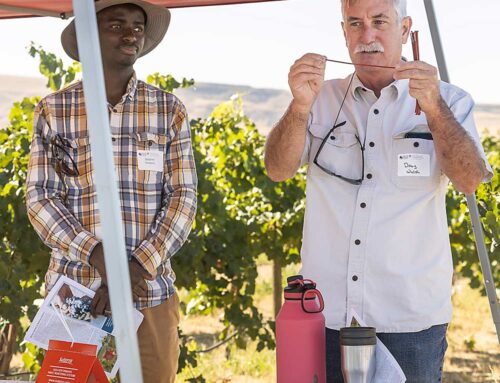
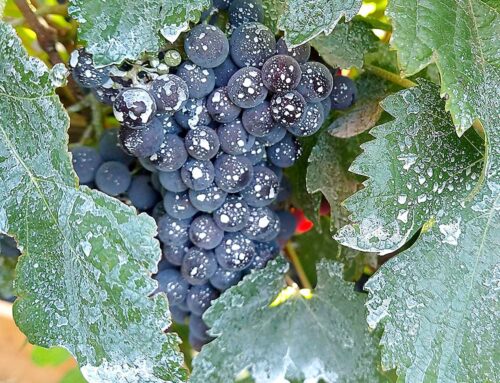
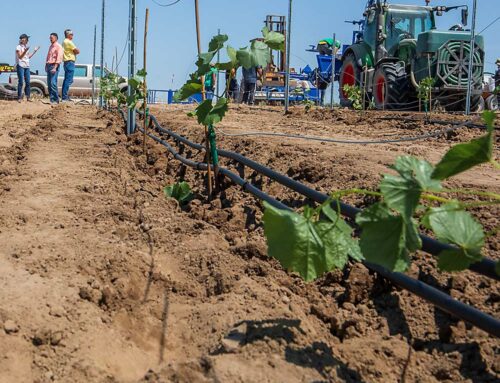
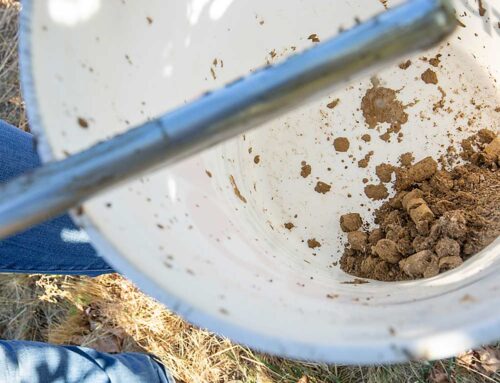
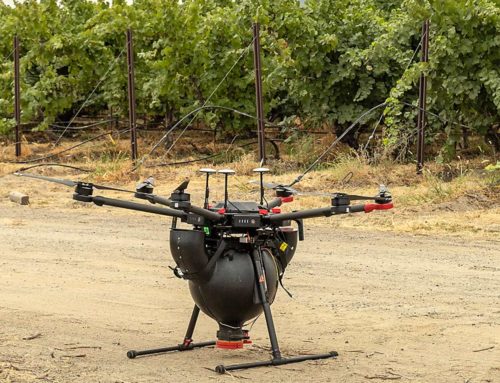
Leave A Comment